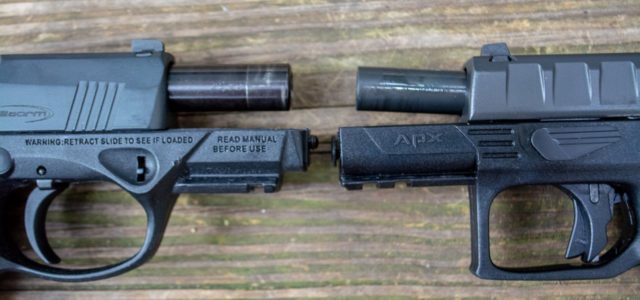Understanding the Beretta Handgun Rotary Recoil System

Even though most CCW carriers are fans (at least to some degree) of handguns, many (if not most) don;t really understand the science as to how the operational process occurs in handguns. While I’m no expert in handgun function, I have a basic understanding of how the process works. But, I came across the post on the Beretta blog that goes into excellent detail describing how the rotary recoil system works and it’s basic benefits. It’s an excellent read as to how and why Beretta uses this system on the PX4 handgun platform.
“By very definition, semi-automatic pistols all have some basic features and functions in common. What makes them “semi-automatic” is the recoil system that performs a carefully orchestrated process of:
Moving the slide to the rear. Ejecting the spent cartridge case. Cocking the hammer or striker for the next shot. Moving forward and stripping a fresh cartridge from the magazine. Loading that cartridge into the chamber as the slide closes and locks into position.

It sounds simple, but like most things that seem straightforward, there’s a catch. When a cartridge ignites, a whole lot of commotion happens in milliseconds. That conflagration creates a rapidly expanding cloud of highly pressurized hot gas. Pressure levels are astronomical, at least compared to everyday pressurized items like car and bike tires. Depending on the caliber, a handgun cartridge generates between 17,000 and 35,000 pounds per square inch of pressure in a fraction of an instant. That’s some seriously high-speed action. In fact, it all happens too fast for those semi-automatic recoil steps to happen reliably and safely.
If the pistol design allows the slide to fling back immediately on ignition, all that pressure hasn’t dissipated yet, so opening the chamber is a supremely bad idea. So, clever firearms designers have developed ingenious ways to “lock” the barrel and slide together as for just a bit as the recoil action begins. That allows the pressure to escape through the fiery end, while the chamber, as defined by the barrel and breech face of the slide (locked together), chills out a bit and begins its journey backward. Let’s state that differently for clarification. Upon ignition, the barrel and slide remain tightly locked together to contain pressure safely while both move towards the rear as a single unit. When pressure levels drop, they can safely disconnect.
In fact, the disconnection must happen or else …
